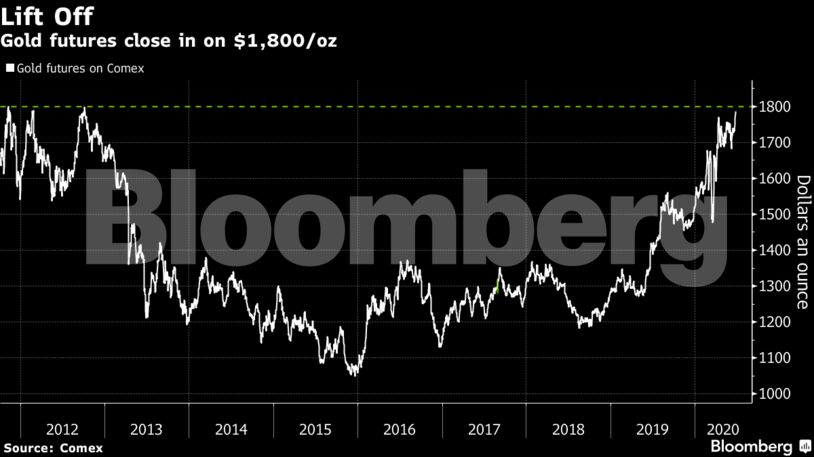
Bullion has jumped this year as the Federal Reserve and other central banks lowered interest rates, while governments worldwide pumped in trillions in stimulus to rescue economies hurt by the pandemic. Aided by concerns of currency debasement and a potential jump in inflation, investors are turning to gold as a store of wealth. With real U.S. interest rates negative, banks such as Goldman Sachs Group Inc. now forecast it’ll hit a record $2,000 in 12 months.
“The rise in Covid-19 cases has been at the heart of the recent uptick in gold futures,” said Vivek Dhar, an analyst at Commonwealth Bank of Australia, who’s tracking real yields. “A sustained decline in U.S. 10-year real yields will provide support for gold futures. That is because as yields fall, gold looks more attractive relative to interest-bearing securities.”
Gold for August delivery rose as much as 0.6% to $1,791.80 an ounce on the Comex, the highest level since 2012, and traded at $1,785.70 at 10:23 a.m. in Singapore. Futures peaked at $1,923.70 in September 2011.
Investors continue to be drawn to the traditional haven. Holdings in bullion-backed exchange-traded funds have soared to a record, increasing almost 600 tons this year.
Miners are also benefiting from the rally. Shares of Newmont Corp., the world’s largest gold company, are up 36% this year, while Australian producer Evolution Mining Ltd. has surged 43%.
Among other main precious metals, spot silver fell 0.3%, platinum declined 0.3% and palladium dropped 0.4%.



















 Become an Insider
Become an Insider